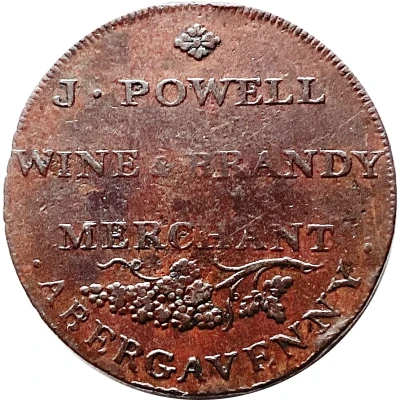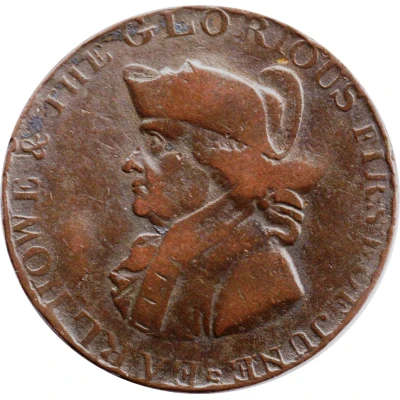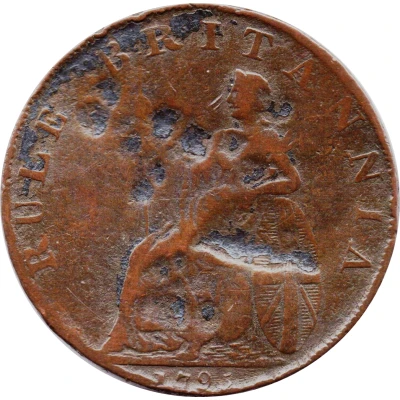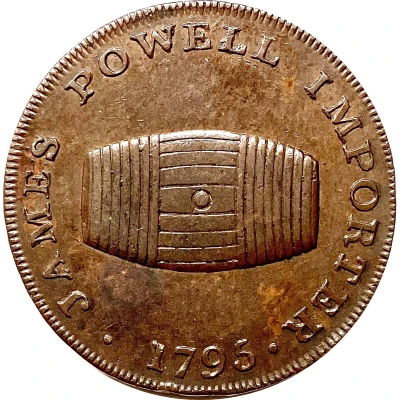


© GT Foreman (CC BY-NC)
½ Penny Monmouthshire - Abergavenny / J. Powell
1795 year| Copper | - | 29 mm |
| Issuer | United Kingdom (United Kingdom, British Overseas Territories and Crown Dependencies) |
|---|---|
| King | George III (1760-1820) |
| Type | Token |
| Year | 1795 |
| Value | ½ Penny (1⁄480) |
| Currency | Conder tokens (1787-1797) |
| Composition | Copper |
| Diameter | 29 mm |
| Thickness | 2 mm |
| Shape | Round |
| Technique | Milled |
| Orientation | Medal alignment ↑↑ |
| Demonetized | Yes |
| Updated | 2024-10-09 |
| Numista | N#329556 |
|---|---|
| Rarity index | 93% |
Reverse
Small ornament above three lines of lettering with bunch of grapes and line of lettering below.
Script: Latin
Lettering:
J · POWELL
WINE & BRANDY
MERCHANT
· ABERGAVENNY ·
Edge
Plain with incuse lettering.
Note: varieties exist (see below)
Lettering: PAYABLE AT MONMOUTH AND ABERGAVENNY . X .
Comment
James Powell was a wine and brandy merchant who released tokens for Abergavenny and Monmouth.This token DH#1 is for Abergavenny, similar types (DH#2, DH#3) exist for Monmouth with slight variations to the reverse design.
Interesting fact
One interesting fact about the A Token ½ Penny (Monmouthshire - Abergavenny / J. Powell) 1795 from United Kingdom (United Kingdom, British Overseas Territories and Crown Dependencies) made of Copper is that it was issued during a time of severe currency shortages in the late 18th century. The coin was minted by a private individual, J. Powell, and was used as a substitute for the official currency, which was in short supply. This coin and others like it were known as "tokens" and were widely accepted as a means of payment in the local area. Despite being made of copper, the coin was still considered valuable and was used for everyday transactions.



